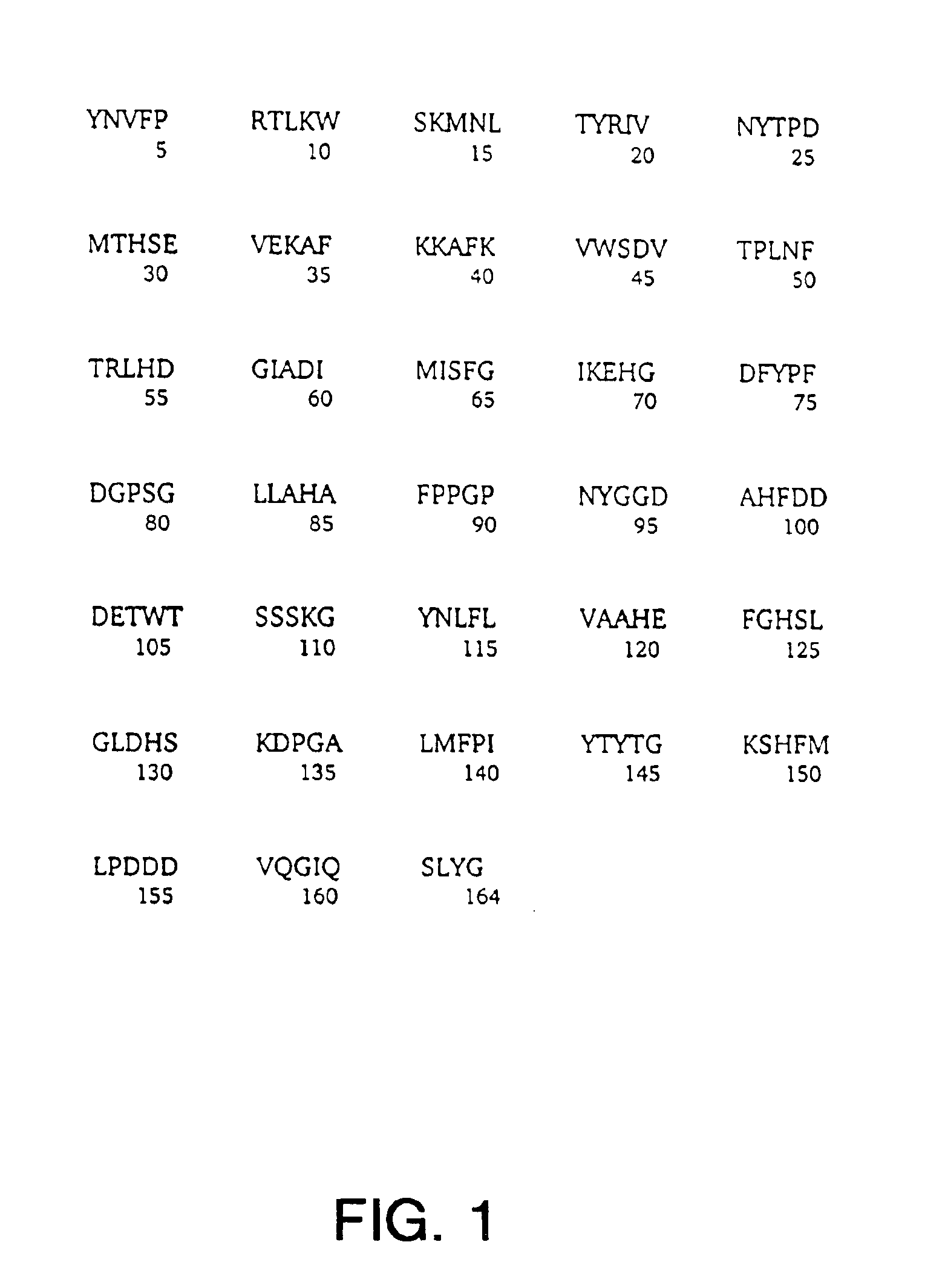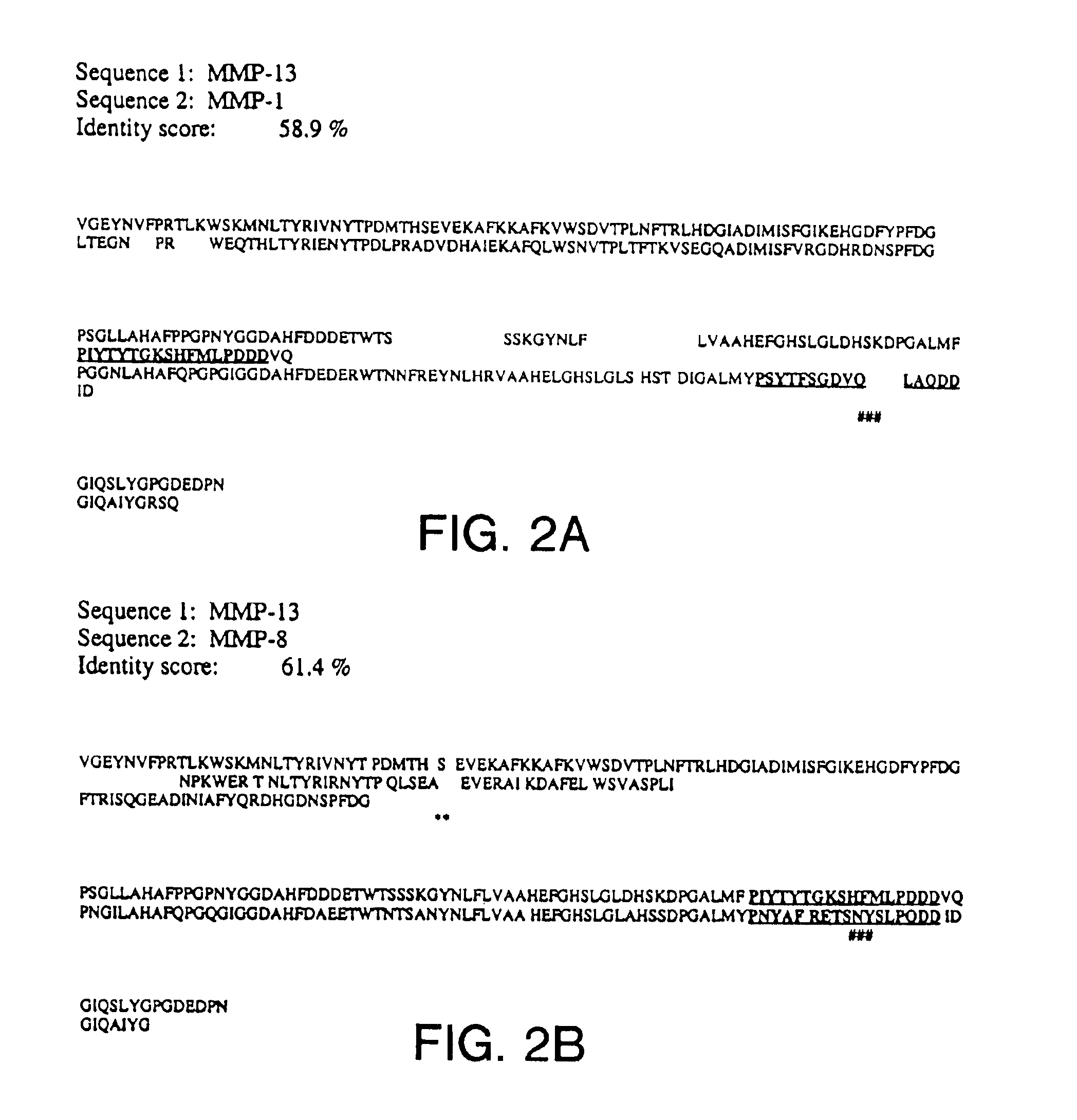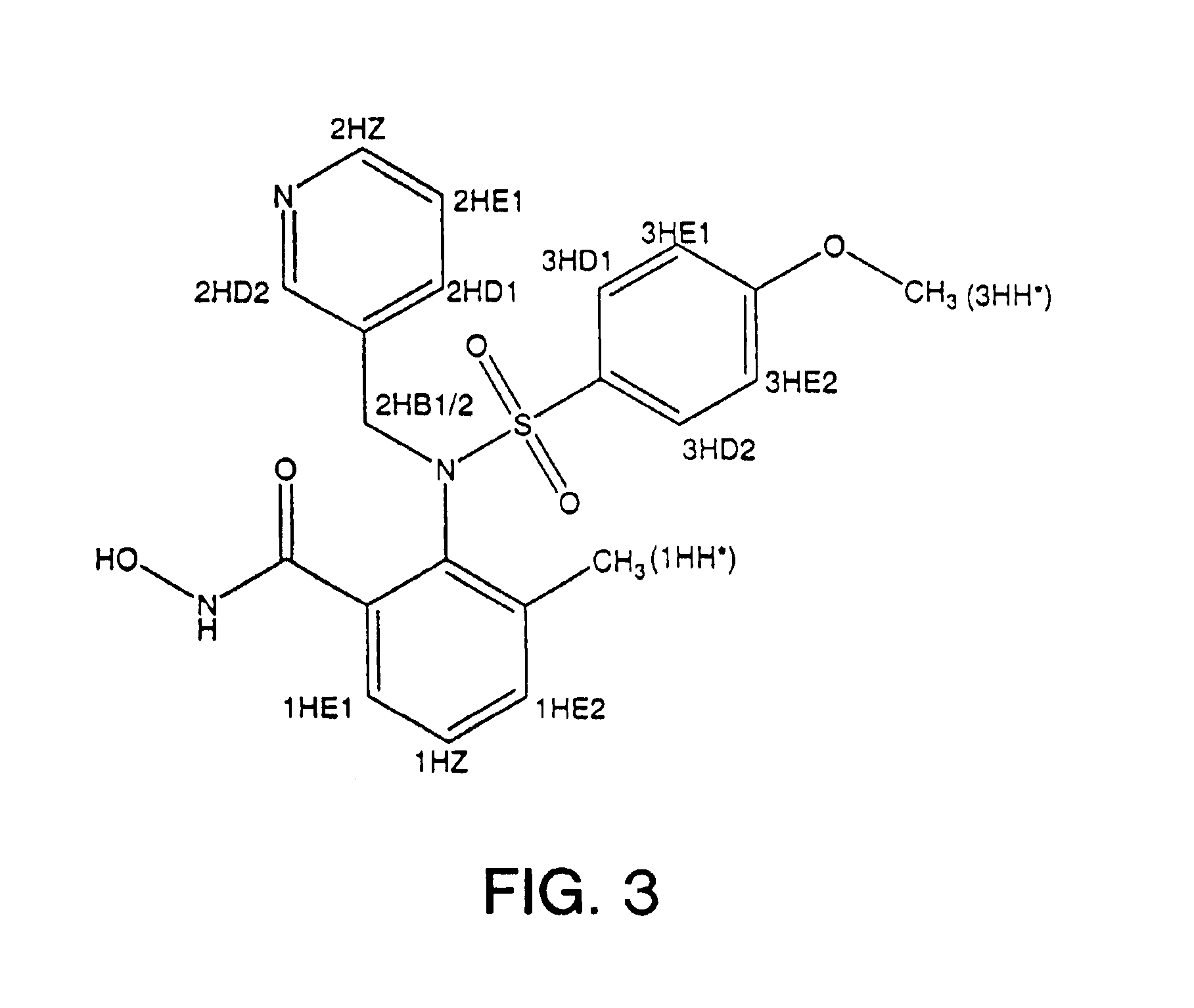Methods for designing agents that interact with MMP-13
a technology of collagenase and interaction, applied in the field of three-dimensional structure of human collagenase 3 (mmp13), can solve the problems of pathological destruction of connective tissue and the ensuing disease state, and achieve the effect of increasing potency and specificity
- Summary
- Abstract
- Description
- Claims
- Application Information
AI Technical Summary
Benefits of technology
Problems solved by technology
Method used
Image
Examples
example 1
1H, 15N and 13CO Assignments and Secondary Structure Determination of MMP-13 Complexed with Compound A
[0076]Methods and Results: The uniform 15N and 13C— labeled 165 amino-acid catalytic fragment of human collagenase-3 (MMP-13) was expressed in E. coli strain BL21 (DE3) containing the plasmid pProMMP-13 according to a published method (Freije et al., J. Biol. Chem. 1994). MMP-13 was purified as previously described (Moy et al., J. Biomol. 1997) with minor modifications. N-terminal amino acid sequencing was performed to confirm the protein's identity while the uniform 15N and 13C labeling of MMP-13 was confirmed by MALDI-TOF mass spectrometry (PerSeptive Biosystems). The sulfonamide derivative of the hydroxamic acid compound, N-Hydroxy-2-[(4-methoxy-benzenesulfonyl)-pyridin-3-ylmethyl-amino]-3-methyl-benzamide, was prepared from 2-amino-3-methyl-benzoic acid methyl ester and p-methoxybenzenesulfonyl chloride followed by alkylation with 3-picolyl chloride, hydrolysis (LiOH / THF) to aff...
example 2
High Resolution Solution Structure of the Catalytic Fragment of MMP-13 Complexed with Compound A
Materials and Methods:
[0082]Preparation of Compound A: The sulfonamide derivative of the hydroxamic acid compound, Compound A, was prepared according to the procedure noted in Example 1 to yield the compound of FIG. 3.
[0083]Expression of recombinant 15N and 13C / 15N-labeled MMP-13: A 169-residue C-terminally truncated human collagenase-3 (MMP-13) was expressed in E. coli. The coding sequence of a C-terminally truncated procollagenase was amplified by PCR from the plasmid pNot3a, that contains the entire coding sequence of MMP-13 (Frieje, et al., J. Biol. Chem. 1994). The PCR primers contained the appropriate restriction sites for ease of cloning. The construct codes for a truncated proMMP-13 with an N-terminal methionine added and a C-terminal proline at residue 169 of the native proMMP-13 sequence. The PCR amplified DNA fragment was the cloned into pET-21a (+) at the Nde I / Sal I sites, re...
example 3
Structure Based Design of a Novel, Potent, and Selective Inhibitor for MMP-13
[0122]The matrix metalloproteinases (MMPs) comprise a family of zinc containing enzymes that cleave a broad range of substrates including collagens, fibronectin and gelatins where the substrate preference various for individual MMPs. The design of MMP inhibitors has been initially based upon imitation of the binding interaction of natural protein substrates to MMPs where structural information of MMPs complexed with peptide substrates has been determined by x-ray crystallography and NMR spectroscopy. This structural information has provided a general description of the MMPs active site.
[0123]The active site for the MMPs is composed of a catalytic zinc chelated by three histidines where three substrate binding pockets are located to both the right (S1′, S2′, S3′) and left (S1, S2, S3) of the catalytic zinc. The substrate binding pockets were identified by the interactions of side chains from the peptide subs...
PUM
| Property | Measurement | Unit |
|---|---|---|
| Molar density | aaaaa | aaaaa |
| Molar density | aaaaa | aaaaa |
| Molar density | aaaaa | aaaaa |
Abstract
Description
Claims
Application Information
 Login to View More
Login to View More - R&D
- Intellectual Property
- Life Sciences
- Materials
- Tech Scout
- Unparalleled Data Quality
- Higher Quality Content
- 60% Fewer Hallucinations
Browse by: Latest US Patents, China's latest patents, Technical Efficacy Thesaurus, Application Domain, Technology Topic, Popular Technical Reports.
© 2025 PatSnap. All rights reserved.Legal|Privacy policy|Modern Slavery Act Transparency Statement|Sitemap|About US| Contact US: help@patsnap.com



